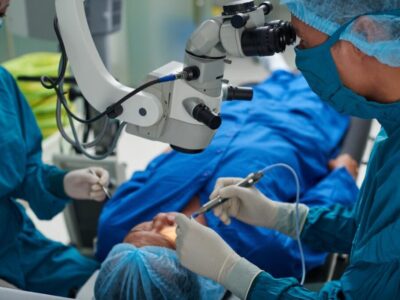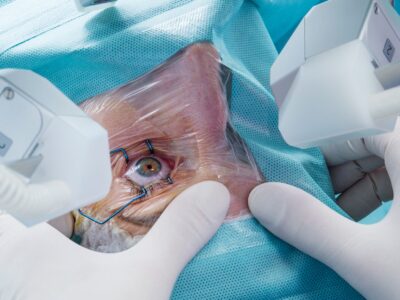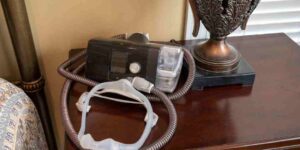
Recovery tips after eye surgery in a Sydney eye clinic
May 20 2023 Cataract Eye Surgery cataract eye surgery cataract surgery cataract surgery sydneyHello there! The recovery tips remain the same everywhere. In other words, where you did your eye surgery in Sydney doesn’t matter. For instance, the recovery tips remain the same if you do your cataract surgery at PersonalEyes, or Sydney Eye Clinic.
Hence, are you planning to go for laser eye surgery (Lasik surgery)? What do you want to do for minimally invasive glaucoma surgery? First, you need to know some recovery tips. Once you are about to enter a sydney eye clinic or you have just finished a procedure, you need to pay attention.
Do you know many Australians lost their vision because they did not get the recovery tips correctly? The healing process from laser eye correction is incomplete if you fail to align with the recovery tips. That is why Sydney Eye Hospital will always inform their patients not to joke with the recovery tips.
Even if the LASIK eye surgery is done successfully, there are tips to follow to aid the healing procedure. Now, after you have left a Sydney eye clinic, what are the recovery tips? That is what this article entails. Click here to get about signs, types, and other facts about cataracts surgery.
Therefore, in this write-up, we will share the dos and don’ts after one has successfully done eye surgery in a Sydney eye clinic. However, we are not specific about a particular eye surgery. Instead, we want to discuss the general recovery tips. In other words, the recovery tips we want to share with you apply to any eye surgery.
The recovery tips will be helpful for those that want to do laser vision correction (Laser treatment). Also, it will be helpful for those that need diabetic retinopathy treatment. So, are you ready for the ride? Let’s ride!
Eye Surgery operation in a Sydney eye clinic
It is possible to remove, fix, or manipulate your eye and the tissues around it through eye surgery. However, infection, eye injury, dryness, and vision loss are possible risks. In addition, some persons are at a more significant risk than others.
Many people find laser eye surgery appealing because it offers clarity, convenience, and freedom from glasses or contacts. Yet not every technique is appropriate for every patient, just like any surgery. Three basic corrective procedures are available: LASIK, LASEK, and PRK.
Furthermore, the specialist will give you several treatment options when you enter a Sydney eye clinic. For instance, PersonalEyes has been the perfect eye clinic in Sydney. This Sydney eye clinic (PersonalEyes) has been a blessing to Australians.
In addition, choosing the right professionals for SMSF setup is vital. Sydney eye clinics can serve as an excellent example of how the right specialist can make all the difference. Just as PersonalEyes has established itself as the perfect eye clinic in Sydney, reputable SMSF setup providers stand out for their expertise and customer satisfaction. Their knowledge and experience enable them to navigate the intricacies of SMSFs effectively, providing clients with peace of mind and sound financial strategies.
Recovery tips after eye surgery (Dos)
Use eye drops as instructed
After the surgery, your eye doctor will prescribe eye drops to you. For example, if you undergo cataract surgery, you must use eye drops to aid the healing process. Many people believe the actual care is eye surgery. Of course, it is. But eye drops also have their work.
Research shows that one of the things eye drops would do after surgery is to prevent infections.
Take things easy for the first two to three days
You are not expected to stay active like before days after your eye surgery. For instance, if you undergo cataract surgery, you need to stay off work for some days after the surgery.
But we see today that people want to resume their work the next day after their surgery. But, of course, that is wrong. Complications may arise. Therefore, you must stay calm for at least two days after the surgery.
Avoid swimming for some time
If you do Laser eye surgery, you are expected to stay off the pool. You must stay away from swimming for four to six weeks after the surgery. Even if you love swimming, you need to make that sacrifice. But, of course, it is just for some moment.
Take your bath as usual
There have been many fake articles on this part. In fact, some go to the extent of telling their audience to avoid bathing for four days after surgery. That is not proven. After laser treatment, patients can take a bath or shower as usual.
Use your face shield
You will be given a face shield after the surgery. Please ensure you use your eyeglasses to avoid other eye diseases. Many people revisit a Sydney eye clinic after they have done surgery successfully.
Recovery tips after surgery (don’ts)
Do not rub your eyes
Many people fall victim to this. They can’t hold the urge to rub their eyes with their hands. But, of course, research shows that one may experience discomfort that may warrant rubbing one’s eye after surgery. So, the healing process can bring that displeasure. Hence, it is expedient to know when you feel like rubbing your eyes; the healing procedure is advancing. So, please hold up.
Avoid soap or shampoo
After eye surgery, you can take your bath with water only. You can use soap if you can control it from penetrating your eyes. If soap enters your eyes, complications may arise. So, avoiding using soap or shampoo for some weeks after eye surgery is better.
Avoid strenuous exercise
Stay away from house chores or housework after the surgery. Of course, you can do some light house chores. But you need to stay away entirely from doing strenuous housework.
Avoid driving for some time
People are advised to stay away from driving after cataract surgery. Most especially those who want to drive at night. The rays of light from another vehicle can affect the healing process. That is why it is suitable for someone with cataracts or LASIK surgery to avoid driving for some time. Now, when can you start driving? Let the time to drive come from your eye specialist.
Avoid makeup for at least four weeks
This is common among ladies. However, complications may arise if you use makeup immediately after eye surgery. So, your doctor will instruct you to avoid makeup and lotion cream after the surgery.
On a final note
Dear reader, we hope you’ve seen something tangible here. In this write-up, we discussed the recovery tips you need to know after leaving a Sydney eye clinic for eye surgery. Finally, do you have something to say regarding this topic? Please feel free to share with us. Thanks for reading!
Read More
Signs, Types, and other Facts about Cataracts Surgery
May 20 2023 Cataract Eye Surgery cataract eye surgery cataract surgery cataract surgery sydney cataracts surgeryCataract surgery is the surest treatment for cataracts which gives you a cloudy lens of your eye. The cataract is a clump of proteins that can cause a patient’s vision problems, which could also worsen over time. Research even shows that cataracts are the commonest cause of blindness worldwide. However, cataracts surgery is one of the safest surgical procedures without severe complications.
The lens of your eye with the pupil and the iris help to focus on objects at different distances. But when a cataract affects the eye, it compromises this vision’s quality, thereby giving it a dull vision. The cataracts surgery process corrects this by replacing the cloudy lens with an artificial lens implant. The process may require an ultrasound probe, a laser for incision, or a manual method.
What is Cataracts Surgery?
Cataracts surgery is targeted at cataracts in the eye lens as one of the world’s safest and most common eye surgeries. It also has a success rate of over 95%. It got a restored vision in no time. The process allows the eye surgeon to replace your natural lens with an artificial lens capsule. It first destroys the proteins on the natural lens and sucks it out before a lens implant.
Signs that you need cataract surgery
A cataract is more common in older people as age advances; it may also worsen. In addition, an underlying disease may also enhance the risk of developing cataracts. Eventually, the patient will need cataract surgery to solve the problem. However, in the early stages, the changes in the lens effectiveness may not be significant enough to cause vision impairment.
Therefore, at the early stage, the patient may not need surgery until the latter stages, when the cataract has accumulated. As a result, the eye doctor would only recommend cataract surgery when the cataracts are becoming noticeable and affecting the patient’s vision.
You need cataract surgery if you experience difficulty driving, reading, and looking at bright lights. In addition, if you notice some whitish substance on your lens, it may indicate that you have cataracts. Some other specific ways cataracts may affect your vision include the following.
Blurry vision
Faded color vision
Halos around lights when you see them
Double vision when you look at an object
Hypersensitivity to bright and glare light pass
Another important cause of cataracts that is worth mentioning is the genetic link. A baby can inherit a cataract from a mother and have it at birth. As a result, congenital cataracts occur in children, causing blindness. However, the child can also undergo cataract surgery before reaching 6 weeks. Cataract surgery is the safest and easiest surgical procedure.
Types of Cataract Surgery
Cataract surgery involves replacing a cloudy natural lens with a new artificial lens, usually an intraocular lens (IOL). Below are some of the most typical types of cataract surgery.
Phacoemulsification (Phaco) Cataract Surgery
During Phaco, a small incision cataract surgery (SICS) procedure, the eye surgeon makes a tiny incision between 2 and 3mm. Then an ultrasonic probe is passed through the incision to break up cataracts with vibration. Afterward, the doctor sucks up the fragments by suction and inserts a foldable lens through them. Whatever small wound is left behind can heal naturally without any aid.
Manual extracapsular cataract surgery (MECS)
When a patient enrolls for MECS, the surgeon makes a bigger incision on the lens, about 9 to 13 mm long. He then removes the natural lens and uses a replacement lens capsule instead. However, this technique has a higher risk of complications because of the relatively bigger incision on the lens. Nevertheless, people may still prefer this method because of its low cost.
Manual small incision cataract surgery (MSICS)
MSICS is similar to MECS in the technique, but it involves a v-shaped incision. This incision reduces the outer space of the eye but gives a broader inside. Consequently, the outer incision measures about 6.5 to 7mm, while the internal incision measures about 11mm. Both procedures have long-term benefits and risks or complications. The short-term results also occur in 3 months in phaco, but MSIC is far cheaper than the former.
Femto Laser-assisted Cataract Surgery (FLACS)
Instead of making an incision with a manual tool, the eye surgeon can also make an incision with a laser beam. That procedure is known as FLACS. Using a laser beam can break up and often the cataract without needing the energy that phacoemulsification requires. It can also enhance the rapid healing of the eyes.
Using a laser can also lead to a more accurate incision that can correct astigmatism. In that case, the FLACS procedure corrects other eye diseases. In the case of astigmatism, the front of the eye has an irregular shape that leads to poor vision. As a result, the patient finds it hard to function without glasses. But it is an expensive technique out of all.
Intracapsular Cataract surgery
Another type of cataract surgery is intracapsular cataract surgery, an older process of dealing with cataracts by removing the entire lens. It also removes the lens capsule from your eye by boring a large incision. However, today this method is not often used due to many complications.
Lens Options for Cataract surgery
There are several options to consider when it comes to the lens implant of an artificial lens for your natural lens. The choice of lens you make can be determined by the lifestyle you have or the price range you can afford. Below are the choices of the lens in the market. Whichever lens you choose, the eye doctor will require you to apply eye drops after the surgery.
Monofocal lens
The most common type of lens is the mono-focal lens which is usually part of your health insurance. However, your insurance partner may require a premium to cover other lenses. Note that the mono-focal lenses take care of your vision to be the best at a certain distance. In other words, mono-focal lenses are for single-distance vision where the patient can now use them to read without glasses.
The other lens types include
Toric lenses are specifically designed to correct astigmatism.
Extended depth of focus
Accommodating mono-focal lenses
Multifocal lenses
Conclusion
The cataract forms on the clouded lens restrict having normal vision with the posterior capsule opacification. Therefore, cloudy vision requires a clear artificial lens as a replacement lens. Cataract surgery is the sure way to restore perfect vision.
Read More


